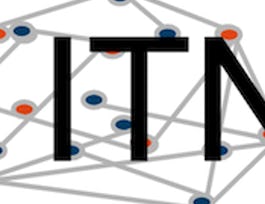How did life emerge on Earth? How have life and Earth co-evolved through geological time? Is life elsewhere in the universe? Take a look through the 4-billion-year history of life on Earth through the lens of the modern Tree of Life!


Emergence of Life
Taught in English
Some content may not be translated
17,662 already enrolled
(100 reviews)
Details to know

Add to your LinkedIn profile
17 quizzes
See how employees at top companies are mastering in-demand skills


Earn a career certificate
Add this credential to your LinkedIn profile, resume, or CV
Share it on social media and in your performance review

There are 9 modules in this course
In this module, you will become familiar with the course, your instructor, your classmates, and our learning environment.
What's included
2 videos8 readings1 quiz1 plugin
The week begins with a discussion of the historical and philosophical approaches that have been developed for the completion of scientific research, with the work of Professor Carl Woese evaluated as an example. The basic tools required for this type of scientific reasoning and the ability to overcome the challenging concepts of scale and complexity are then presented. Finally, we'll explore the dynamic formation of the Earth itself with respect to the environmental conditions present on the earliest and most ancient version of planet Earth.
What's included
9 videos1 reading2 quizzes1 discussion prompt
The advent of life on Earth came about as a result of a remarkable confluence of physical, chemical, and biological processes, all of which were intrinsically linked to rapidly changing early Earth environments. Within this context, cutting-edge approaches in molecular phylogeny by Professor Carl Woese revealed new understandings of the emergence of life and the possible distribution of life within the cosmos. All this and more will be explored in this week's lessons!
What's included
10 videos3 readings2 quizzes2 peer reviews1 discussion prompt
This week, you'll explore how scientists interpret ancient fossilized life, which yields remarkably detailed and complete reconstructions of the lifestyles of ancient organisms that have been deceased for hundreds, thousands, millions, and even billions of years. These reconstructions provide valuable information regarding the evolutionary success of organism morphology and lifestyle.
What's included
7 videos1 reading2 quizzes1 peer review1 discussion prompt
This week, you'll learn more about the Cambrian Explosion, which led to the development of external hard skeleton components at 542 million years before present. The initial successes of the invertebrates were shortly followed by the appearance of vertebrates with internal skeletons. Life then utilized these newfound evolutionary capabilities, beginning distinct cycles of radiation, diversification, and extinction, which define the three great Eukarya faunas of the Phanerozoic.
What's included
10 videos2 readings2 quizzes2 peer reviews1 discussion prompt
In the early Paleozoic, plants evolved to leave the water and invade the terrestrial landscape. Following this transition, vertebrates emerged into land-based ecosystems, and Carbon Dioxide concentrations increased in the atmosphere. The greenhouse warming of the Earth propelled the success of both prevascular and vascular plants, as well as the related terrestrial radiation of the three lineages of the reptiles. This week, you'll also learn about the Permian-Triassic mass extinction and later environmental changes that opened the door to the rise of the diapsids.
What's included
7 videos1 reading2 quizzes1 peer review1 discussion prompt
This week, you'll learn more about the Permian-Triassic extinction event, which caused more than 80% of life to go extinct. This opened vast swaths of ecological opportunity for radiation and diversification of life during the Mesozoic. You'll learn about symbiosis, which was widely utilized during this period, as well as the fascinating lineage of diapsid reptiles that rose to replace the synapsid predators of the late Paleozoic. We'll also discuss the rise of the dinosaurs, as well as the catastrophic meteor impact that drove the dinosaurs to extinction.
What's included
8 videos2 readings2 quizzes2 peer reviews1 discussion prompt
With the demise of the dinosaurs, mammals rapidly radiated and diversified during the Cenozoic. The combination of abundant food sources and significant fluctuations in global climate fostered extreme variations in morphology, body size, and interaction with the environment. You'll learn why mammals had a distinct advantage over previous groups, and you'll also have the opportunity to explore multiple theories on primate and hominoid evolution in the context of global conditions during this period.
What's included
10 videos1 reading2 quizzes1 peer review1 discussion prompt
No matter where you are or what you believe, sometime in your life you will look up into the sky and ask: What is out there? Where are we going? Is there life elsewhere in the universe? This course is dedicated to searching for answers to these questions. The fundamental concepts of life and habitable environments, established upon the modern synthesis of the Tree of Life, will direct us in recognizing biospheres that might be quite different from our own. In the last week of this course, we will look in detail at what the future has in store for space exploration and the search for life in the cosmos.
What's included
11 videos1 reading2 quizzes1 discussion prompt1 plugin
Instructor

Recommended if you're interested in Basic Science

Universitat de Barcelona

Rutgers the State University of New Jersey

Johns Hopkins University

Rice University
Why people choose Coursera for their career




Learner reviews
Showing 3 of 100
100 reviews
- 5 stars
60.60%
- 4 stars
17.17%
- 3 stars
10.10%
- 2 stars
4.04%
- 1 star
8.08%
New to Basic Science? Start here.

Open new doors with Coursera Plus
Unlimited access to 7,000+ world-class courses, hands-on projects, and job-ready certificate programs - all included in your subscription
Advance your career with an online degree
Earn a degree from world-class universities - 100% online
Join over 3,400 global companies that choose Coursera for Business
Upskill your employees to excel in the digital economy
Frequently asked questions
Access to lectures and assignments depends on your type of enrollment. If you take a course in audit mode, you will be able to see most course materials for free. To access graded assignments and to earn a Certificate, you will need to purchase the Certificate experience, during or after your audit. If you don't see the audit option:
The course may not offer an audit option. You can try a Free Trial instead, or apply for Financial Aid.
The course may offer 'Full Course, No Certificate' instead. This option lets you see all course materials, submit required assessments, and get a final grade. This also means that you will not be able to purchase a Certificate experience.
When you purchase a Certificate you get access to all course materials, including graded assignments. Upon completing the course, your electronic Certificate will be added to your Accomplishments page - from there, you can print your Certificate or add it to your LinkedIn profile. If you only want to read and view the course content, you can audit the course for free.
You will be eligible for a full refund until two weeks after your payment date, or (for courses that have just launched) until two weeks after the first session of the course begins, whichever is later. You cannot receive a refund once you’ve earned a Course Certificate, even if you complete the course within the two-week refund period. See our full refund policy.


